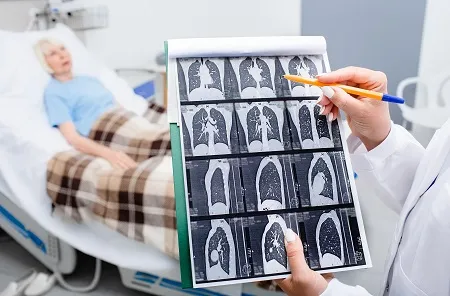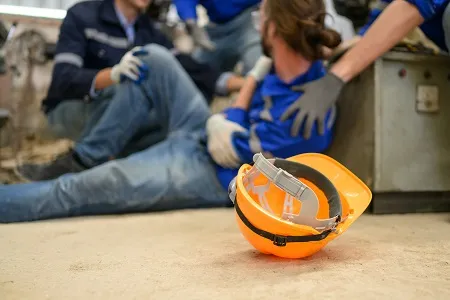How to Prevent Workers from Getting Silicosis
In late 2018, ABC an Australian news network reported that there had been six terminal cases of silicosis in just three weeks. This prompted the Queensland Government to issue a warning to the engineered stone bench-top industry. An audit of 10 work sites was also initiated by Workplace Health and Safety Queensland. In this article, we take a deeper look at what silicosis is, which workers are susceptible to the disease and how you can prevent it.
What is silicosis?
This is a form of pneumoconiosis which develops once someone breathes in crystalline silica dust. The Australian outbreak as a result of exposure to the use of artificial stone which has experienced a boom in the housing industry. The engineered or artificial stone is made up of resin which has higher levels of silicates and silica compared to granite and marble which were used in the past. These silicates and silica are inhaled as the works cut or polish the stones. Some of the occupations in which workers are exposed to silica include:-
- Construction sites
- Workers in the mining industry, especially rock mining and coal
- Masonry and stone cutting
- Sandblasting
- Glass manufacturing
- Quarrying
Silicosis results in the scarring of lung tissues which lead to shortness of breath. This continues to develop long after the exposure to crystalline silica dust has stopped. Its effects are permanent.
Types of silicosis
A person infected with the silicosis can go for decades without the disease being detected. Common symptoms include; general body weakness, severe coughing, and shortness of breath.
There are three types of silicosis which include:-
- Acute silicosis – this could occur due to exposure to high levels of crystalline silica dust for less than one year
- Accelerated silicosis – this could occur after exposure to silica dust for three to 10 years
- Chronic silicosis – this occurs as a result of exposure to such dust for more than 20 years
Workers who are exposed to silica dust are also susceptible to lung cancer, tuberculosis, and chronic obstructive pulmonary disease (COPD).
Silicosis is potentially lethal as there is no known treatment. Infected persons can only receive supportive care including using inhalers, stopping smoking, vaccinations against infections as well as the use of antibiotics. In its late stages, lung transplant and oxygen treatment may be necessary.
Once a person is diagnosed with silicosis, the disease progresses with time. Persons with accelerated silicosis may experience massive fibrosis in four to five years. On average, persons infected with the disease have 11.6 years of life. This makes prevention critical.

How to prevent silicosis
Diseases that come about as a result of crystalline silica exposure including silicosis, connective tissue disorders, lung cancer, kidney disease and OCPD are preventable. Some of the ways through which this disease can be prevented include:
- Eliminating the hazard
This is the most effective way of preventing the disease. Where possible construction sites should use less hazardous material. Projects may also be designed to minimise the level of concrete finishing required. Processes that generate lower amounts of dust could be implemented. For example, splitting concrete pavers as opposed to sawing them.
- Administrative controls
This involves the implementation of worksite policies and practices that are suitable for a site exposed to silica dust. For instance, such sites should have a written silica exposure control plan. Workers should be trained on the dangers of exposure and safe work procedures. Warning signs should be posted in areas where workers are exposed to the dust. Employers should also schedule lung screening programs for their employers from time to time.
- Engineering controls
Physical alterations to the equipment, facilities, and processes could also reduce the chances of silica dust exposure. For example, facilities should be well ventilated. Workers could also use water to prevent the artificial stones to prevent the silica dust from becoming airborne.
- The use of personal protective equipment (PPE)
Workers should be provided with appropriate respirators and eye wear. Personal protective equipment should also undergo vigorous testing to ensure that they are effective. The use of PPE is solely not effective.
How Induct for Work can aid in preventing silicosis
In spite of being aware of the health hazard silica exposure poses, there are quite many challenges in preventing it. For instance, larger companies have the resources to put up dust-control and mitigation strategies. However, the industry has evolved into family-run enterprises that have little or no knowledge of regulatory requirements. Even if they knew, they do not have the resources to conform to these regulations. This is where Induct for Work comes in.
Induct for work is an online training software through which company owners can train their workers on the dangers of silica exposure and the work practices they should observe. It is quite beneficial to small startups as it is extremely inexpensive compared to face-to-face training. As the training takes place online, workers who are yet to join your workplace are made aware of the dangers of silicosis even before they set foot on the site.
The online course should include personal hygiene and safe work practices including:-
- Correct application of dust extraction systems
- Washing their hands and face after working in a dust prone area
- The need to change into washable or disposable work clothes when getting into the work site
- Not eating, smoking or drinking in dust prone areas
- The need to always use personal protective equipment and how to put them on correctly and maintain them
You can monitor the workers’ comprehension of the training by setting quizzes throughout the course.
Try Induct for Work today by signing up for a two-week free trial!
Do you have any questions or great tips to share?
Induct for Work – the only online induction system you would need to run online inductions.



